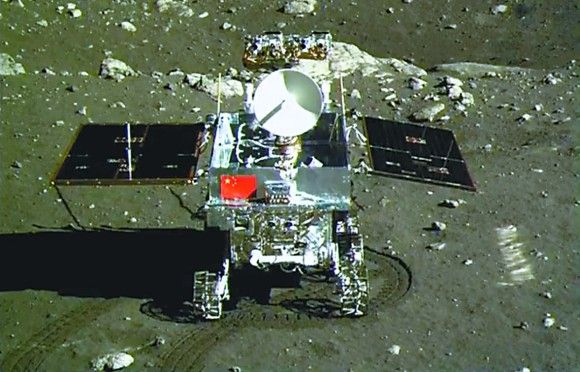Steps Are Being Taken, Towards Development of a Polish UV Satellite.
Polish Space Agency has ordered a joint feasibility study to be carried out concerning a UV observation astronomical satellite. The Nicolaus Copernicus Astronomical Centre of the Polish Academy of Sciences will act as the contractor within the aforementioned scope. The study is expected to be ready at the end of September 2016. Polish UV satellite is to serve scientific purposes, its main task is going to be related to research in the domain of photometric and spectroscopic variability of the space objects, within the UV light range.
Polish Space Agency ordered a joint feasibility study concerning an UV observation astronomical satellite. The Nicolaus Copernicus Astronomical Centre of the Polish Academy of Sciences will act as the contractor, within that scope. The relevant agreement has been concluded on 12th May 2016, by and between Marek Banaszkiewicz PhD – POLSA’s President, and Professor Piotr Życki PhD Hab. - Director of the Nicolaus Copernicus Astronomical Centre. Conclusion took place in presence of the representatives of the agency, Vice President Defence Issues Piotr Suszynski, and Mieczysław Lepionka, POLSA’s Director of the Military Space Technologies Department. The study is expected to be ready by the end of September 2016.
The competition, within the framework of which the supplier of the initial feasibility study pertaining to a UV observation astronomical satellite – the Nicolaus Copernicus Astronomical Centre of the Polish Academy of Sciences – has been selected, was announced on 11th February 2016. 2 offers were received in a response to the competition announcement, sent to 20 entities by the Polish Space Agency.
The astronomical UV spectrum observation satellite is to be used for scientific purposes. Its main task is going to examine the photometric and/or spectroscopic variability of space objects, within the UV light range. UV is a spectral range within which strong and hot bodies radiate. Thanks to the use of the satellite, it is going to be possible to observe both the stars, as well as non-star objects, including quasars and blazars, or even the early stages of supernova explosions.
The initial feasibility study regarding an astronomical UV observation satellite, prepared in line with the POLSA’s recommendation, is going to cover the technical side of the project concerning the architecture of the satellite system, including the technological solutions making it possible to simultaneously observe spectroscopic or photometric variability of space bodies, by a single satellite platform. Moreover, the study is expected to present meaning and possibilities within the domain of examining the space objects in the UV spectral range, and technological and industrial capacity of the Polish industry, related to creation of a satellite. During the last year’s “Poland in Space” conference, Professor Marek J. Sarna working at the Nicolaus Copernicus Astronomical Centre stated, that cost of a small satellite (with a mass between 50 and 150 kilograms) is estimated with a ratio of 1 kg = PLN 1 million, hence, the total cost of the equipment is expected to be contained in an amount between 50 and 150 million zlotys.
Notably, the world currently faces a deficit of tools that could be used to carry out UV space research. ESA, NASA and the UK Science Research Council had created and launched the International Ultraviolet Explorer satellite for that purpose back in 1978, however it ceased its operations in 1996. Thus, at the moment, the Indian Astrosat observatory remains, at the moment, the only satellite capable of carrying out UV observations.
POLSA ordered two other feasibility studies throughout the last couple of months, including the one, the aim of which is to cover the area of the “Polish space awareness system architecture, with a particular emphasis placed on the subsystem for observing and tracking space objects”. The study has been ordered from the Astri Polska Sp. z o.o company and it is expected to be completed in July 2016. Secondly, PZL-Warszawa-Okęcie S.A. company is expected to develop an initial feasibility study, related to a radar imaging satellite. The latter study will also involve the Creotech Instruments company.



